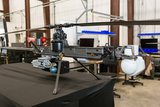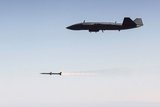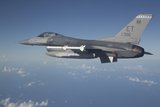Enhancements keep Warthog tusks sharp
The A-10C Thunderbolt II is unique as the only fixed-wing close air support (CAS) aircraft operated by the USAF.
Known as the Warthog, the ungainly looking aircraft (introduced in 1976) disables enemy armour, neutralises lesser targets and watches over US and allied combat troops.
Designed during Cold War for the CAS role against Soviet aggression in Western Europe, the Warthog instead proved its worth in Iraq and Afghanistan campaigns, as well as against ISIS and other Islamist terrorist groups.
With titanium in vulnerable areas, the airframe is unusually robust. Modifications have been therefore been incremental and relatively minor, apart from
Already have an account? Log in
Want to keep reading this article?
More from Air Warfare
-
![Anduril UK and GKN Aerospace collaborate on British Army ACP bid]()
Anduril UK and GKN Aerospace collaborate on British Army ACP bid
The pair will submit their demonstrator concept for Project Nyx, a development project for the British Army’s Land Autonomous Collaborative Platform.
-
![US Army command’s Picatinny CLIK common lethal drone interface makes progress]()
US Army command’s Picatinny CLIK common lethal drone interface makes progress
The Picatinny Common Lethality Integration Kit is designed to overcome the issue of unique integration methods between lethal payloads and drones as well as avoiding problematic acquisition conditions created by vendor lock.
-
![Australia invests extra A$1.4 billion in MQ-28A Ghost Bat after successful missile fire test]()
Australia invests extra A$1.4 billion in MQ-28A Ghost Bat after successful missile fire test
The investment includes new contracts for six MQ-28A Ghost Bat aircraft, as well as provisional funds to invest in the development of a Block 3 prototype.
-
![US approves potential $4.7 billion missile and air defence system sales to Denmark and Italy]()
US approves potential $4.7 billion missile and air defence system sales to Denmark and Italy
Italy could field the JASSM-ER for its combat aircraft including the F-35, while Denmark has been approved for AMRAAM and an Integrated Battle Command system procurement.
-
![Northrop Grumman to fly new Project Talon CCA by late 2026]()
Northrop Grumman to fly new Project Talon CCA by late 2026
The newly unveiled collaborative combat aircraft looks to strike a balance between capability and cost-effectiveness, according to the company.
























